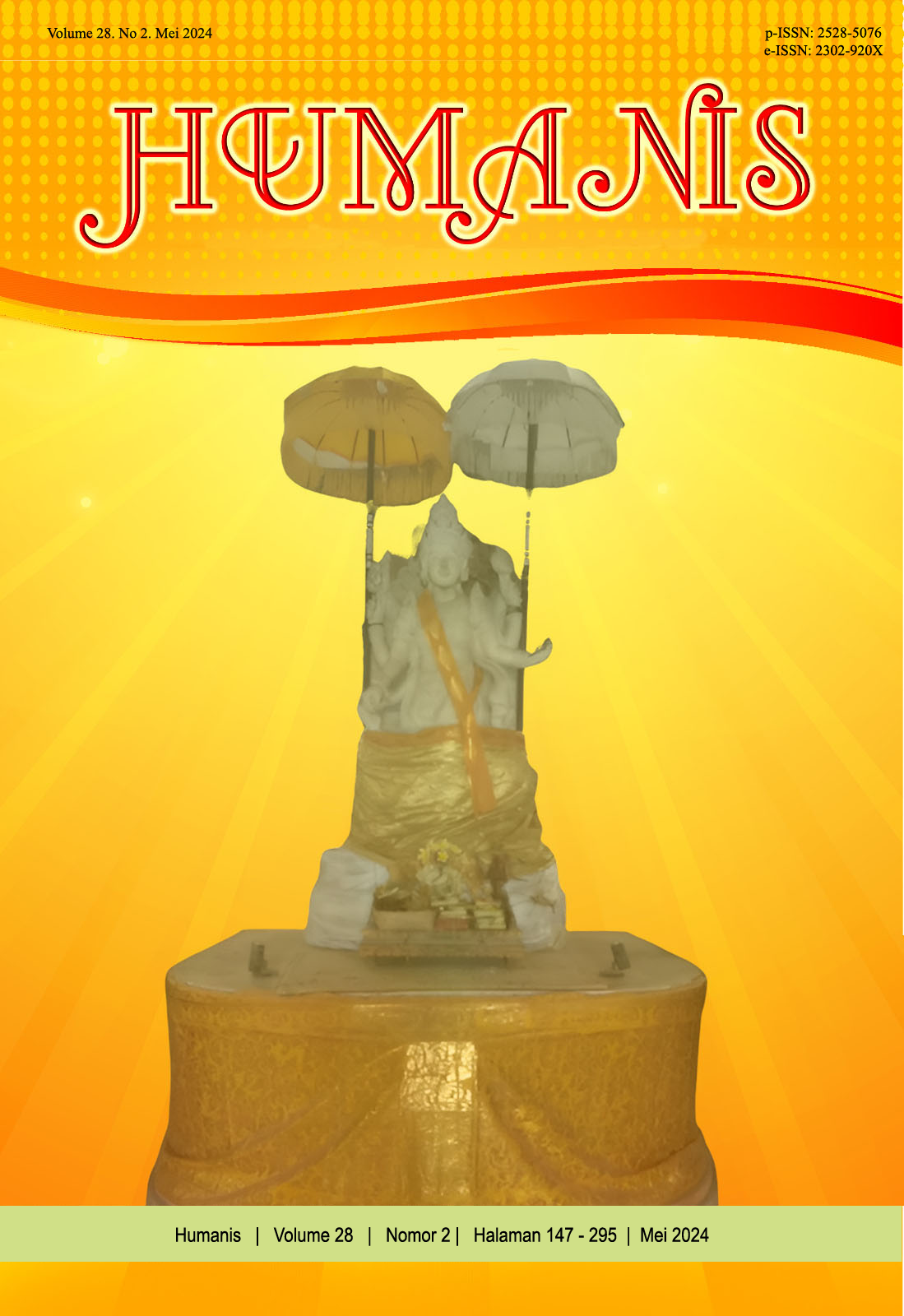An Analysis Meaning of the Verb ‘to See’ in Banjarese Language: A Natural Semantic Metalanguage Studies
Abstract
The aim of this study is to explicate and describe the verb malihat, which is synonymous with the verb 'to see' in the English language. The qualitative method was used to explain the explication of verbs ‘to see' in the Banjarese Language. The primary data were obtained from interviews with Banjarese native speakers. The secondary data were from written sources to assess the validity of the data. The data was analyzed using the Natural Semantic Metalanguage (NSM) theory by Anna Wierzbicka. The results of the study found nine types of the verb malihat in the Banjarese language. There are meitihi, tebincalak, menjanaki, meawasi, manonton, maintip, mailangi, mancilingi or mancelengi, and manyirit. Furthermore, those verbs are polysemous into four categories: seeing and feeling, seeing and knowing, seeing and saying, and seeing and doing something.
Downloads
References
Goddard, C. (2008). Natural Semantic Metalanguage: The state of the art. In C. Goddard (Ed.). In Cross-linguistic semantics. Mouton de Gruyter.
Goddard, C. (2012). Semantic primes, semantic molecules, semantic templates: Key concepts in the NSM approach to lexical typology. Linguistics.
Goddard, C. (2018). Ten Lectures on Natural Semantic Metalanguage: Exploring Language, Thought and Culture Using Simple, Translatable Words. Brill.
Goddard, C. (2020). Prototypes, polysemy and constructional semantics: The lexicogrammar of the English verb climb. In Meaning, Life and Culture (pp. 13–32). ANU Press.
Goddard, C., & Wierzbicka, A. (2014). Words and Meanings (First). Oxford University Press.
Hapip, A. D. (1977). Kamus Bahasa Banjar. Pusat Pembinaan dan Pengembangan Bahasa.
Kridalaksana, H. (2009). Kamus Linguistik. Gramedia Pustaka Utama.
Mahsun. (2012). Metodologi Penelitian Bahasa: Tahapan Strategi, Metode, dan Tekniknya. PT. Rajagrafindo Persada.
Mulyadi. (2000). Struktur Semantis Verba Penglihatan dalam Bahasa Indonesia. Linguistik Indonesia, 2(18).
Rosa, R. N. (2018). Makna Verba ‘Mancaliak’ Dalam Bahasa Minangkabau: Kajian Metabahasa Semantik Alami. Lingua Didaktika, 1–11.
Sidiq, U., Choiri, M., & Mujahidin, A. (2019). METODE PENELITIAN KUALITATIF DI BIDANG PENDIDIKAN (A. Mujahidin, Ed.; First). CV Nata Karya.
Suastini, N. W. (2014). Kajian Metabahasa Semantik Alami Verba Melihat Dalam Bahasa Bali. SPHOTA: Jurnal Linguistik Dan Sastra.
Subiyanto, A. (2011). Struktur Semantik Verba Proses Tipe Kejadian Bahasa Jawa: Kajian Metabahasa Semantik Alami. Kajian Linguistik Dan Sastra, 23(2), 165–176.
Sudaryanto. (2015). Metode dan Aneka Teknik Analisis Bahasa (Second). Universitas Sanata Dharma.
Sugono, D., & Mugeni, M. (2008). Kamus Bahasa Banjar Dialek Hulu (Musdalipah, S. Akbari, Jahdiah, W. Rakhman, M. Yamani, D. Hidayatullah, & N. Hastiah, Eds.; First). Balai Bahasa Banjarmasin.
Swarniti, N. W. (2021). The Meaning of The Verb “Destroy” in the Balinese Language: A Natural Semantic Meta Language Approach. HUMANIS, 292–298.
Umar, H. (2013). Metode Penelitian Untuk Skripsi dan Tesis. Rajawali.
Whitney. (1960). The Element Of Research. Prentice-Hall, Inc.
Wierzbicka, A. (1996). Semantics: Primes and Universals. Oxford University Press.


















